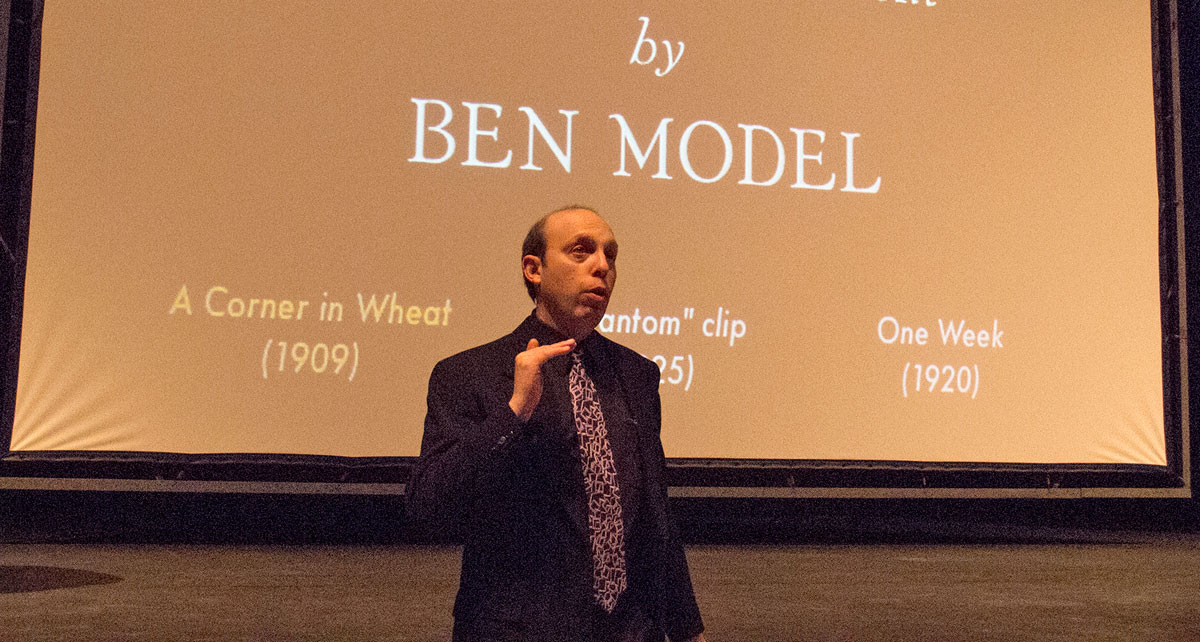I hope this series of posts that I began in January 2021 has been useful, educational, thought-provoking or food for thought. In providing answers to questions about silent movies that I’m asking in interviews, I have tried over and over for years to come up with a simple and concise and accessible answer to why people in [insert city/town] should come to [insert theater/museum] to see a silent film.
It’s not easy.
One of the quotes I throw out every time and which rarely gets used is that something I frequently hear from people who have come to a silent film show for the first time is “This was way more fun than I thought it was going to be!”
Which is true.
What I’ve tried to lay out in the last 64 posts is are my observations and theories about why that is. Because on the surface, these really old movies shouldn’t hold up. And yet the reaction the students in my silent film course at Wesleyan University have to seeing Douglas Fairbanks for the first time is always the same. It’s very positive, and fun and engaging. And all they’re seeing at first – before we move on to watching The Mark of Zorro (1920) – is the first 23 minutes of Fairbanks’ A Modern Musketeer (1917).
I may have gotten some of the ideas and concepts and aesthetics wrong here, but even with the facets of Silent Film that are unresearchable – as was the case with my undercranking studies – I can’t think of any other reason why these concepts would be so. You may disagree with these ideas and theories, or you may think I’ve hit the nail on the head, with all or some of them.
But I felt it was important to lay all of this out so that it can be discussed and addressed. There are many many books on silent film history, on stars and directors and studios and production companies from the “silent era”. In writing this series of blog posts I wanted to answer the question we all may have, and have certainly been asked, as to why we like Silent Film. It’s a multi-pronged answer, one with several tributaries and tangents, but I think there is a reason, rooted in Silent Film’s unplanned reliance on our engaging our imagination, utilizing our right-brain function, more than we do with regular film or TV or video. Just ask anyone about old time radio vs. television.
I really appreciate your reading what I’ve been writing about all this year, and for your comments and questions and for any re-sharing of these posts you may have done. I look forward to seeing you at any of the in-person shows I’m starting to resume, or online for any of the live-streamed silent film programs I’ll be doing.
Thanks.
Ben Model
The first post in this series is here.
The previous post (#64) to this one is here.

Silent film are universal and timeless. They can be appreciated in different countries. But they are not really silent. The music played for the film add to its power.
Ben, Thank you for your lengthy series off posts – they have indeed been “useful, educational and thought-provoking”. Like other readers, I hope that it might be possible at some point to see your thoughts and theories gathered together in book form.
David, thanks so much. I’m so glad you’ve enjoyed these posts, and thanks also for your vote of confidence and interest in seeing all of these gathered in book form. I hadn’t really thought much about this being a blog-to-book project when I started out, since I didn’t know how many posts this would wind up being or what the word count (or interest) would be. I’ll take some time now to assemble all of it and see if, as a piece, it works as a single item held in your hand.